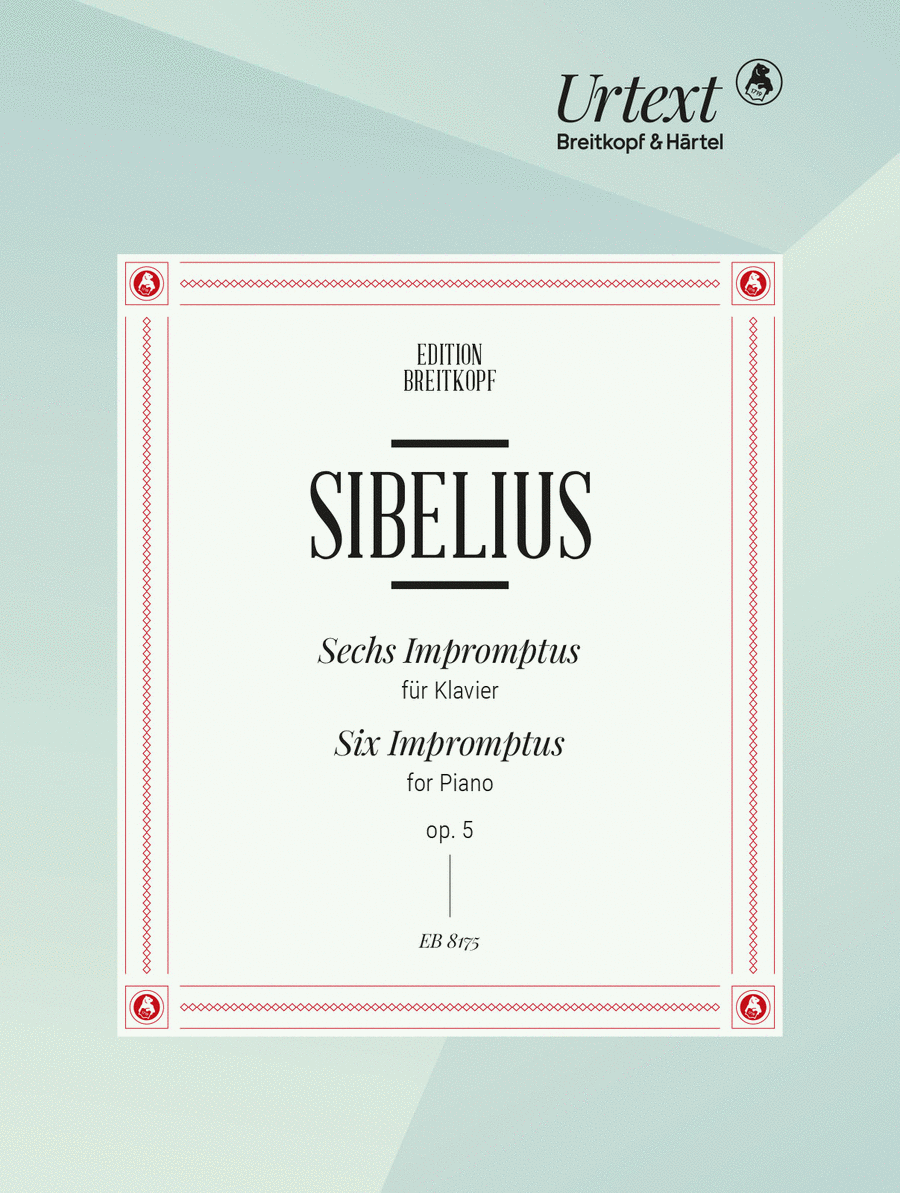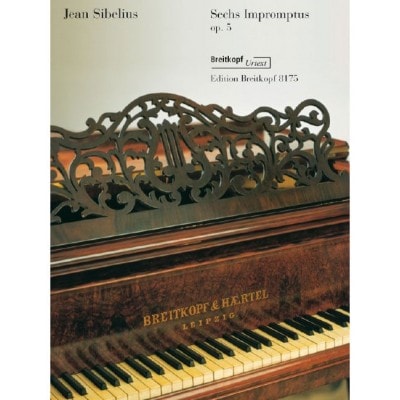 | By Jean Sibelius (1865-1957). Edited by Kari Kilpelainen. For Piano. Edition Breitkopf. Urtext edition. 24 pages Arr : Piano soloPublisher : Breitkopf & Härtel$22.95 - See more - Buy online

Sheet music extract
ISBN 979-0-004-18279-6. 9 x 12 in inches.
The piano runs through Jean Sibelius's oeuvre like a red thread. After some first student pieces, he composed the Sonata op. 12 in 1893, and his first cycle of piano pieces, the Six Impromptus op. 5 Sibelius' first piano cycle in Urtext
The piano runs through Jean Sibelius's oeuvre like a red thread. After some first student pieces, he composed the Sonata op. 12 (EB 8142) in 1893, and his first cycle of piano pieces, the Six Impromptus op. 5. Here the Finnish composer self-assuredly takes up a great romantic genre significantly shaped by Schubert and Chopin. Sibelius draws inspiration from some of his own early works in this composition, yet he also uses the last two pieces from opus 5 as the groundwork for an autonomous "Impromptu" for string orchestra which he put together shortly after completing the piano pieces. "You must judge me on the basis of my orchestral works. The piano does not interest me. It cannot sing," said Sibelius. Yet how seriously can we take this famous quote when considering how masterfully he crossed the boundaries with his Impromptus? Pianists such as Ralf Gothoni, Glenn Gould and Olli Mustonen have not let themselves be deterred by the composer's harsh self-criticism, and, with their interpretations, have provided compelling proof of the opposite.
CD WERGO WER 6765 2
CD WERGO WER 6765 2 Alle Dirigierpartituren und Orchesterstimmen sind exklusiv uber Breitkopf and Hartel erhaltlich. Die Klavierauszuge der Brahms-Solokonzerte und die Studien-Editionen (Studienpartituren) verbleiben beim G. Henle Verlag und sind dort erhaltlich. |
|

 (AMERICAN COMPANY)
(AMERICAN COMPANY) 




